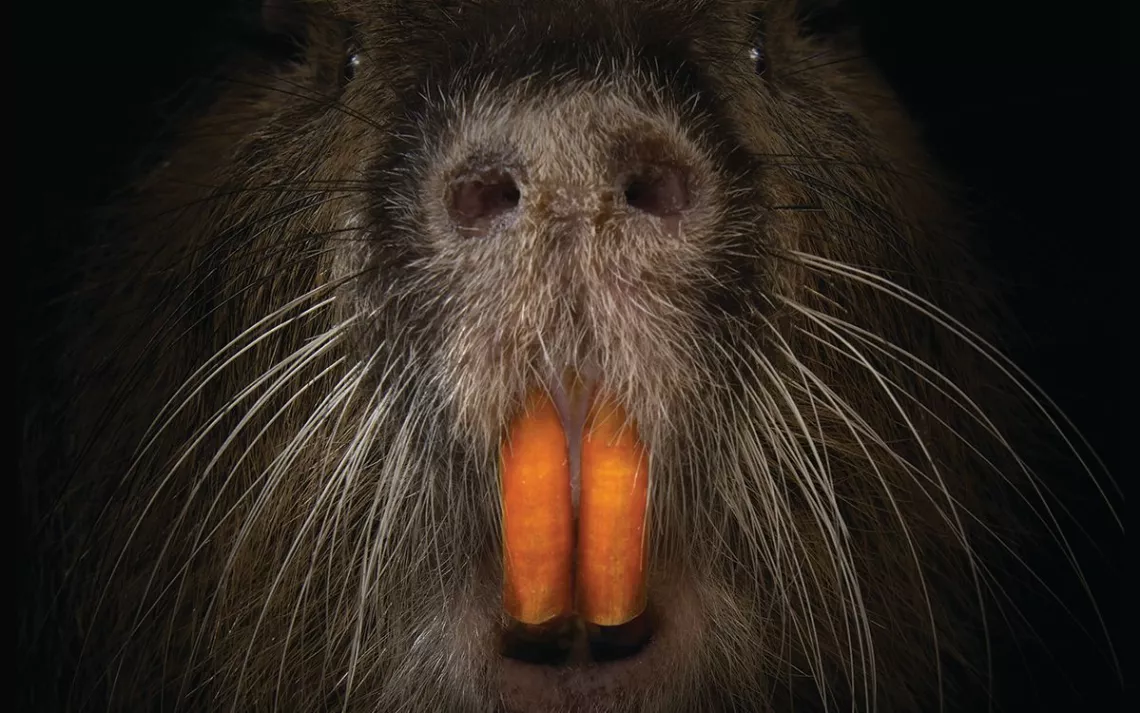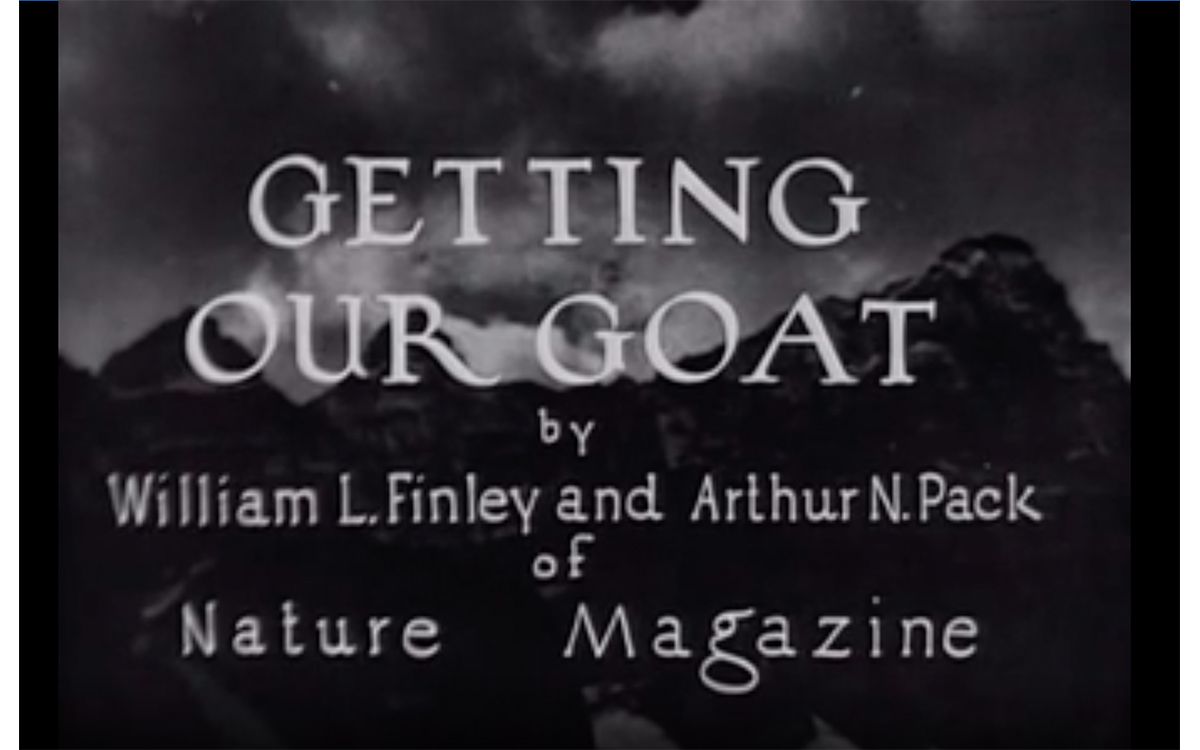8 Films for Your Tiger King Detox
Refocus your viewing attention on wildlife—and true conservation

Photo courtesy of Tilapia Film (creators of Rodents of Unusual Size)
For many of us, eight socially distanced hours of a Tiger King Netflix binge entertained and disgusted in equal measure. Since its March 2020 release, more than 34 million viewers have trudged through the muddy true crime miniseries, following a stranger-than-fiction cast as they traverse the dark side of the collection and (supposed) conservation of big cats. Yet for all of its salaciousness, intrigue, and black humor, the show’s resolution is unclear. By the end, there are no winners, just losers. And perhaps the biggest loser of all are the captive big cats, whose plight is treated as nothing but a mere plot point.
To cleanse our palette of Joe Exotic and company, here’s a list of standout wildlife films from the past century that place the focus where it should be: on the animals themselves and the people who work to protect them through conservation, education, and awareness.
Getting Our Goat (directed by William Finley and Arthur Pack, 1928)

With “conservation” still a nascent term in the 1920s, wildlife-commissioner-turned-filmmaker William Finley—along with Nature magazine editor Arthur Pack—produced a series of wildlife-forward films that demonstrated the medium’s potential for environmental advocacy. Finley spent the 1920s touring across the United States—bringing these films to churches, sporting clubs, and school gymnasiums—to educate and entertain audiences via some of the most beautiful black-and-white footage of Western flora and fauna ever taken. Perhaps his most famous film, Getting Our Goat, features Finley donning a crude goat costume in an attempt to capture footage of the notoriously skittish rocky mountain goat. In just 15 minutes, Finley and Pack communicate the splendor and behaviors of these animals—with a mix of information and comedy—in a way that would influence the way conservation-focused wildlife films would tell creatures’ stories for the remainder of the 20th century.
The Silent World (directed by Jacques Yves-Cousteau and Louis Malle, 1956)
Part safari on the open seas, part campy science fiction, part ocean love story, The Silent World stunned critics and audiences alike in the 1950s and continues to defy expectations of what a wildlife film can be. The film features some of the first underwater footage from the deep sea—footage made possible by Cousteau’s development of freediving SCUBA gear in the years preceding the film. Cousteau’s eye for classic narrative and passion for the sea, coupled with a young Louis Malle’s emerging talent for cinematography, create a visually stunning and affecting film. While not without its problematic scenes—most notably the dynamiting of a coral reef in the name of a scientific species census (but clearly also for the sake of spectacle)—the film is worthy of attention if for nothing other than its role in the creation of the modern ocean film.
Animals Are Beautiful People (directed by Jamie Uys, 1975)
In many ways, the inclusion of Jamie Uys’s independently produced Animals Are Beautiful People could be seen as contentious. In delivering intimate footage of the behaviors of African wildlife, Uys and his production team employed many of the controversial tactics inborn to the genre: the use of captive and tame animals (a handler’s legs make a cameo at the 56-minute mark), non-diegetic sound, and suspect scientific claims (such as the animal bacchanal that follows the consumption of fermented fruit). Yet, in understanding its problems, we are still presented with an example of a blue-chip nature documentary at the form’s whimsical best: one that happily indulges in the genre’s folksy characters and fabulist plots. Complete with a playful score courtesy of Brahms and Tchaikovsky, Animals Are Beautiful People is a celebration of animal life and movement—a trou normand in the genre that celebrates the beauty of the wild form.
Grizzly Man (directed by Werner Herzog, 2005)
It might be easy to dismiss controversial bear enthusiast and filmmaker Timothy Treadwell, the subject of 2005’s Grizzly Man, as a proto Joe Exotic. Onscreen, both appear eccentric, vain, obsessed. However, doing so would be a great disservice to Treadwell and his legacy. His love for the natural world—misguided as it may have been—permeates in this deeply meditative and poignant portrait of the tragically doomed conservationist. Treadwell’s story is told in his own voice; a narrative that the masterful Herzog weaves from Treadwell’s own camcorder footage. In the end, we are left feeling conflicted about Treadwell, his legacy, and his form of conservation; the film serves as a challenge issued to the audience for personal introspection, a right only earned by the best of conservation media.
Virunga (directed by Orlando von Einsiedel, 2014)
Like Tiger King, Virunga has its share of corruption, violence, and shady players. The film takes place in the Congo’s Virunga National Park as park rangers battle to protect the preserve—and most notably, its endangered mountain gorillas—from the compounding threats of poaching, warfare, and nefarious foreign resource exploiters. However, instead of fixating solely on the troublesome side of conservation work, Virunga is ultimately hagiographic—focusing on the work of the rangers, conservationists, and journalists working to save Virunga, no matter the bleakness of such an endeavor. Throughout, the film expertly juxtaposes the beauties of the natural with the troubles of the human, providing a startling call to action for the protection of the park and its inhabitants.
The Ivory Game (directed by Kief Davidson and Richard Ladkani, 2016)
Few films address the need for wildlife conservation as grippingly as The Ivory Game. Not only does the film masterfully convey the plight of African elephants in the midst of a devastating global ivory trade, but it does so as an edge-of-your-seat techno-thriller replete with undercover journalism and cybersleuthing. After this heart-pounding trip around the world—to Tanzania, Kenya, Zambia, China, Hong Kong, and Vietnam—the film leaves viewers feeling breathless and angry, yet empowered to take up the fight against poaching and the ivory trade
Rodents of Unusual Size (directed by Quinn Costello, Chris Metzler, and Jeff Springer, 2017)
Not many wildlife documentaries pack as much surprise as 2017’s Rodents of Unusual Size. With a title borrowed from The Princess Bride, a colorful cast of Cajun characters, and a focus on nutria—an invasive swamp rodent—it might be easy to dismiss the premise as mere pabulum. Instead, Rodents of Unusual Size presents one of the most nuanced and persuasive approaches to the biological and cultural relationship between humans and wildlife seen in the genre. Often intimate and poignant, Rodents of Unusual Size offers both a history and way forward in traversing the complicated issue of invasive species in conservation work.
Jane (directed by Brett Morgen, 2017)
Lovingly crafted from 140 hours of previously unseen film footage created by Jane Goodall’s late ex-husband, wildlife photographer Hugo van Lawick, director Brett Morgen’s Jane offers a strikingly intimate portrait of the primatologist in the years before she found international fame. Jane is a rarity in conservation-focused media; it is a piece that delicately balances on the line between the human and the animal, before exposing the fallibility of this demarcation in the first place. Ultimately, Morgen’s film is a testament to Goodall’s passion—a passion told in her own words and supplemented by the film’s ethereal score, composed by Philip Glass. Few conservationists are inspiring (and antithetical to Tiger King) as Goodall, making this the perfect film to reaffirm viewers’ missions as armchair (or active!) conservationists.
 The Magazine of The Sierra Club
The Magazine of The Sierra Club



